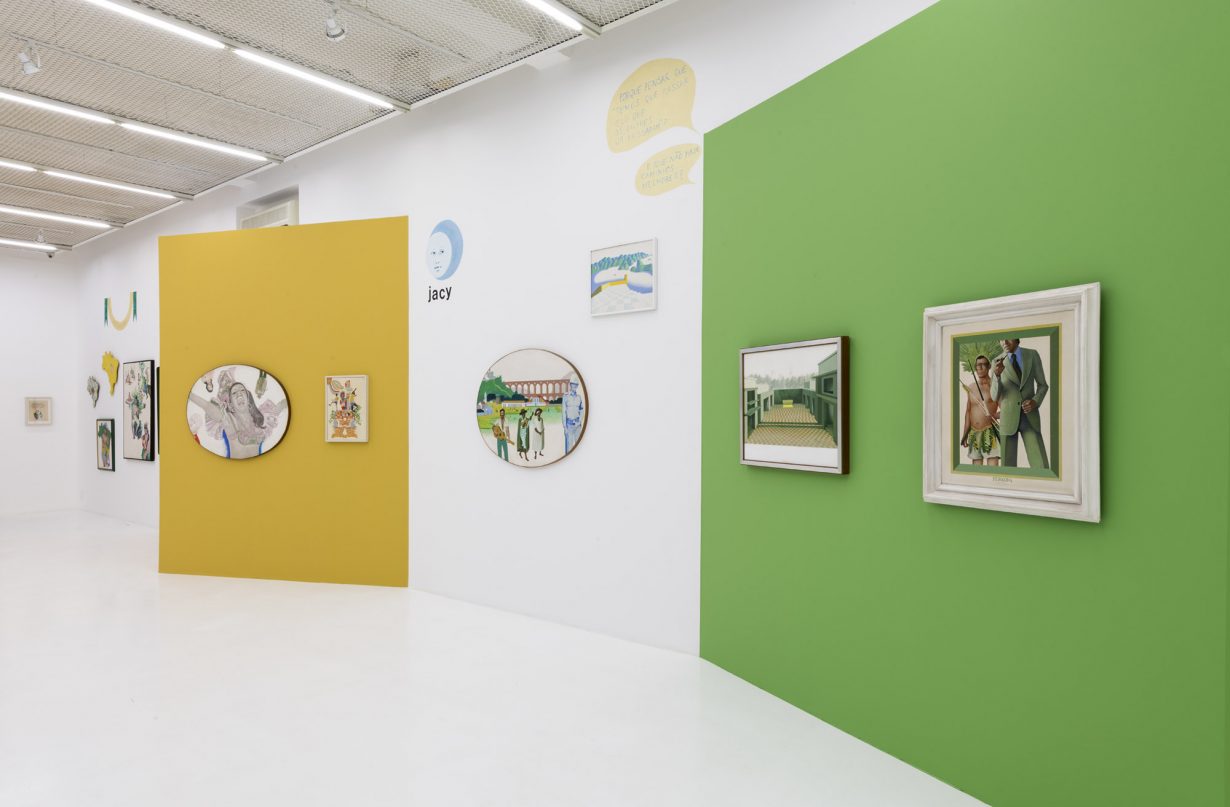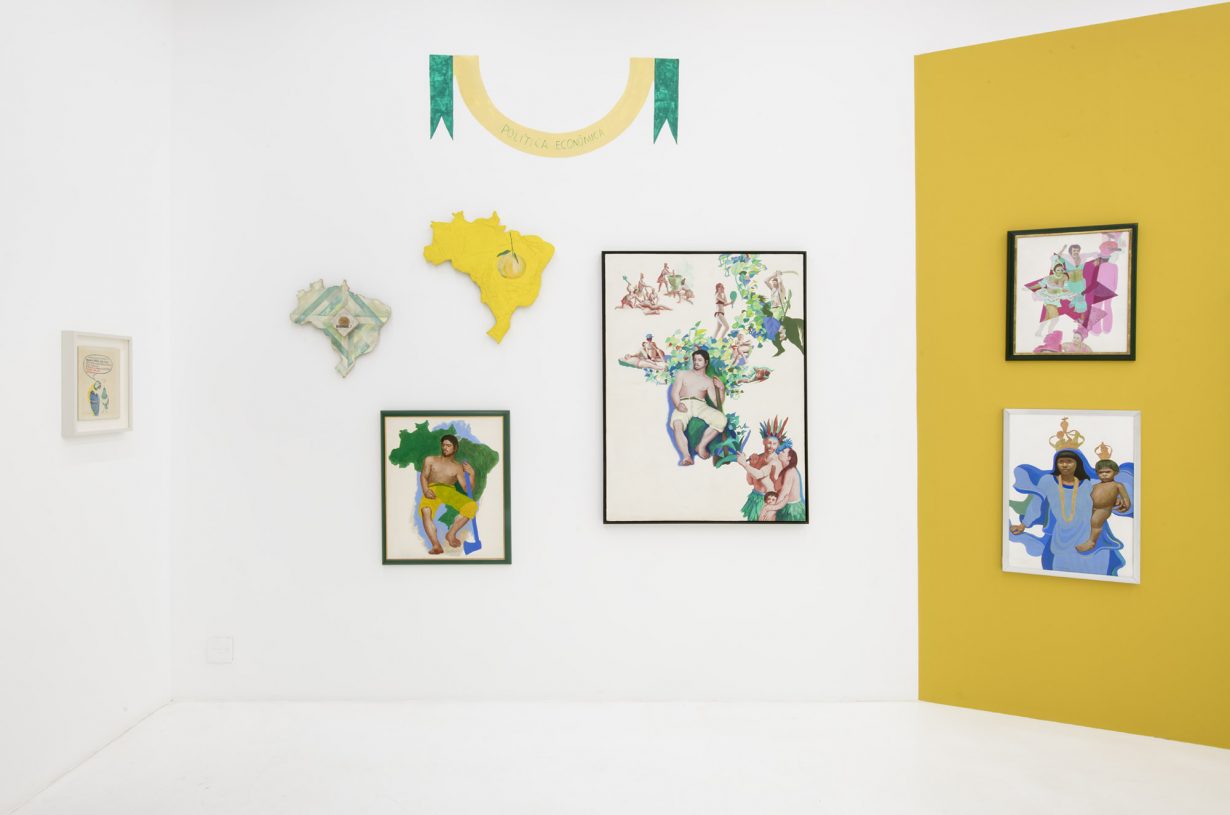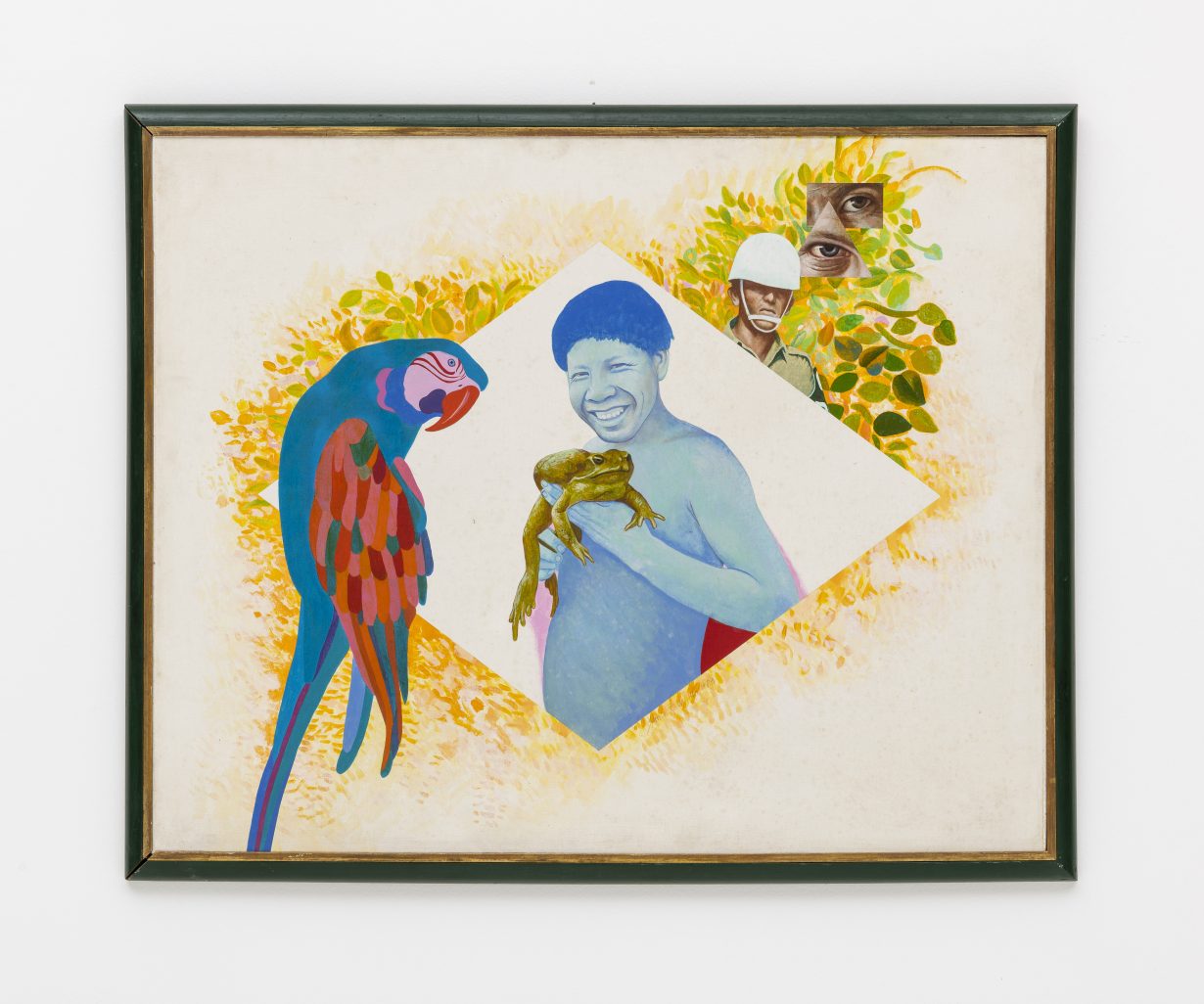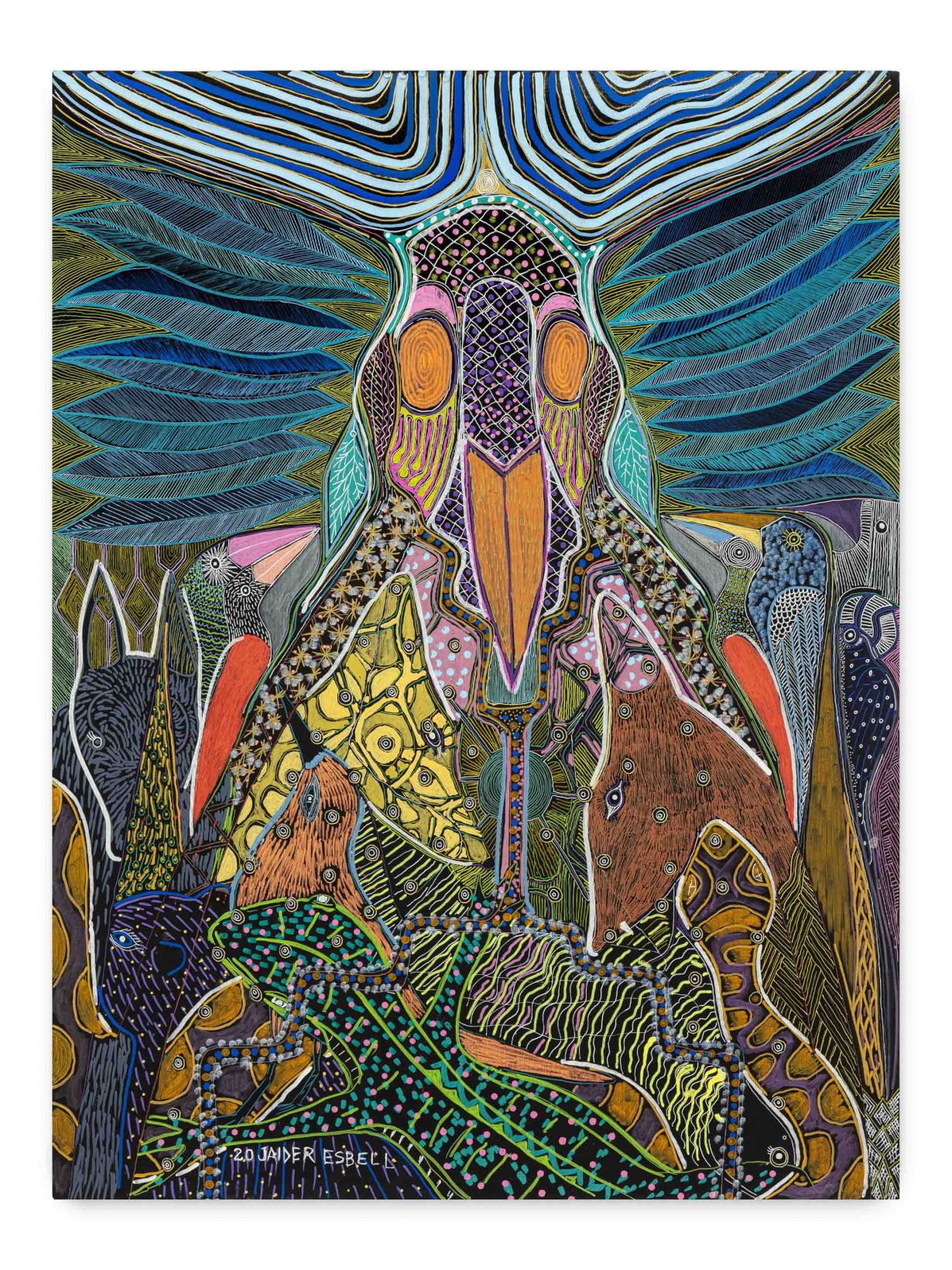At a time when indigenous land is once again under attack, exhibitions in São Paulo of works by Glauco Rodrigues and Jaider Esbell offer urgent perspectives
In 1962 Glauco Rodrigues was invited to a residency programme in Rome. When the artist returned home to Brazil two years later, he found the country a very different place to the one he had left. The leftwing leadership of João Goulart had been deposed in a violent coup, replaced by an increasingly authoritarian military dictatorship, and the good times Rodrigues had known previously – the glamorous Brazil of Modernism, Bossa Nova and Cinema Novo – was receding into the shadows. It was at this point the artist decided to embark on a history of his country, producing dozens of paintings over the following three decades in acrylic, oil and ink on both canvas and card.

Thirty of the Tropicália-inflected works hang at São Paulo’s Bergamin & Gomide, where the walls have been painted in the yellow, green and blue of the Brazilian flag. They boast the alluring style of contemporaneous travel advertising and an equally cheering palette (Rodrigues, who died in 2004, also designed album covers for the likes of Neguinho da Beija-Flor and João Bosco, a few of which are displayed on the gallery’s reception desk). These are paintings that revel in tongue-in-cheek clichés: there are copious images of beaches, samba dancers, football and parrots. One textile work, hung as a banner from the ceiling, reads ‘YES WE HAVE BANANAS’, the first word in English, the rest in Portuguese.

On canvas, Rodrigues’s compositions are like modern-day history paintings, with multiple figures, scenes and narratives present within any one frame. But amongst the exoticised symbols of Brazil nestle darker elements. In a still life of yellow flowers, a skull peeps from behind the petals; in another work small vignettes featuring people sunbathing are interspersed with scenes of slaughter. The acrylic on canvas D’après Almeida Júnior (1981) features a portrait of a worker sat resting with his axe, painted in the heroic realism beloved by the nineteenth-century Brazilian artist Almeida Júnior. Yet in Rodrigues’s appropriation of the older artist’s style, his subject, topless, doleful in yellow shorts, is depicted against the green silhouette of Brazil; a hint perhaps of the environmental destruction that fuelled the Brazilian boom times. In the triptych Retrato de Henriette Amado (1970), the titular Brazilian radical pedagogue and proponent of emancipatory education is pictured surrounded by political figures from the military regime, men against whom she was ideologically opposed.

The works in We Happened To Be Cannibals come together as an encyclopaedic study of Brazilian culture and twentieth-century history (not least how Oswald de Andrade’s 1928 ‘Manifesto Antropófago’ has loomed large in its postcolonial identity). One enduring motif is the indigenous figure, hardly surprising given the dictatorship oversaw a genocide of an estimated 8,000 of this land’s original owners. Na Floresta (1981) features an indigenous man holding a toad; overlooking his shoulder, menacing, is a soldier. Persona (1974) shows a man in a suit, his face out of frame. Behind him, pushed to the background, an Amerindian man in traditional clothes.

The plight of the indigenous has been raised by leftwing Brazilian artists for several generations, but rarely have artists from those communities been given a platform to represent themselves. This is gradually changing: the last Videobrasil festival in 2019 featured seven indigenous artists and collectives; Pinacoteca de São Paulo is currently hosting Véxoa, a survey of work around indigenous issues; and in 2019, Sandra Benites’s hire by the Museu de Arte de São Paulo marked the first time an indigenous person took a curatorial position at a Brazilian museum. Among the artists who have emerged through this tardy institutional recognition is Jaider Esbell. The Makuxi artist and activist will feature at the next Bienal de São Paulo and currently has a solo show at Galleria Millan in the city.

The open frontage of Galleria Millan allows the wind to gust through several ceiling-hung cotton sheets featuring a series of semiabstract compositions made in natural plant dyes. Collectively they are titled Jenipapal (2020) – there are ten in total – and typical is O cajado do Pajé, in which the titular walking stick is extravagantly decorated with a series of chickens that seem to emanate from the side. In Kono’ (Chuva) a face emerges from the complex grid of parallel brush strokes, bordered by a series of fish pictograms. The raw surface of Era’tî is mostly covered with puddles of the murky yellow and brown dyes, a line-drawn ox-type animal attracting the eye to the top right corner.

As well as works on paper and further wall-hung unframed cotton paintings, Esbell’s show is completed by a series of works on canvas, the acrylic paint overlaid with thick pen marks. These are highly detailed, richly coloured and, from a Eurocentric point of view, surreal in their combination of figurative elements. In his curatorial statement however Esbell notes the subject is a tree known as the Jenipapo, a ‘fruit-technology and one of my grandmothers’: what I comprehend as dreamlike is, within Makuxi cosmology, no less real than anything one can touch and see. In A descida do pajé Jenipapo do reino das medicinas (2021) a boat floats along a river, the prow and stern morphing into monstrous heads with sharp teeth. A trunk grows from the centre of this vessel, its foliage convulsing the sky into green, orange and blue swirling light. In another painting for example, O anúncio do diluvio (2020), a bird’s face stares straight out to the viewer, its plumage merging into the foliage and sky in the background, its scale out of all proportion to the coiling snake, sharp-eared mammal and pink-beaked bird that flank it.

If Rodrigues’s project was to chart Brazil’s coloniser history, then Esbell’s is to map the land against which the white man waged war. The artist invokes the concept of txaísmo in his practice, a manner of charting indigenous lands that is not derived from Western models of geography or cartography but instead includes the visual, psychological and spiritual space of a territory too. At a time when indigenous land in Brazil is once again under attack from a militaristic and would-be authoritarian government, providing space for artists from that culture to speak, not as victims, but as guides to possible new ways of living with the world, seems essential.
Jaider Esbell: Ruku, Galeria Millan, São Paulo, 20 February – 20 March
Glauco Rodrigues: Acontece que Somos Canibais, Bergamin & Gomide, São Paulo, 4 February – 5 March
